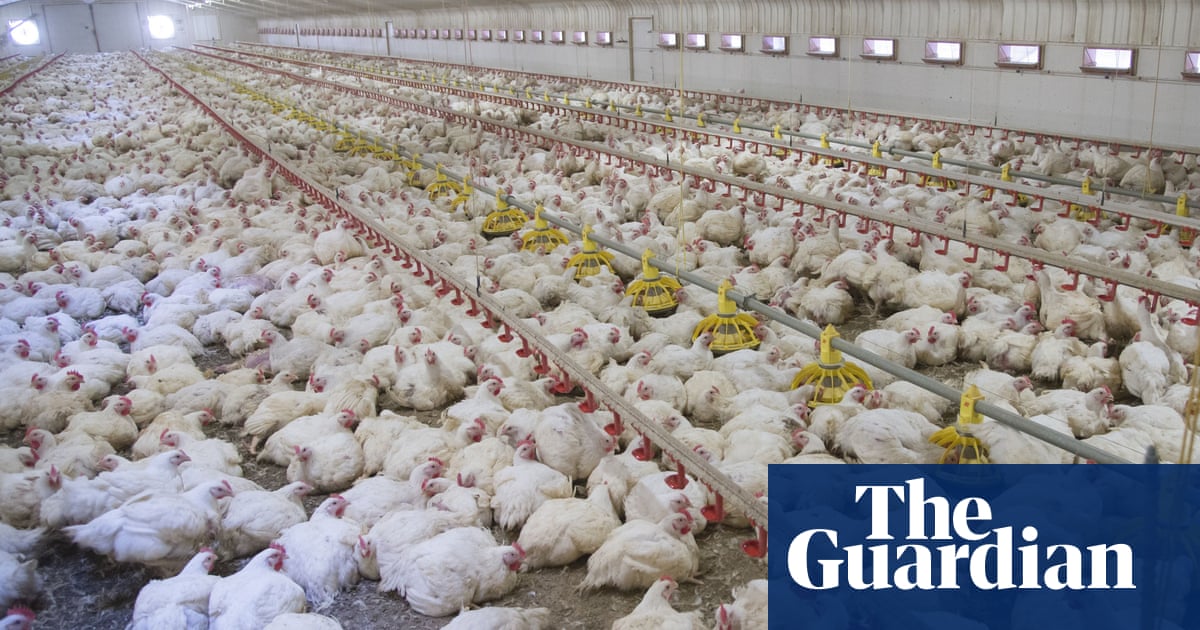American-style intensive livestock farms are spreading acrossEurope, with new data revealing more than 24,000 megafarms across the continent.
In the UK alone, there are now 1,824 industrial-scale pig and poultry farms, according to thedata obtained by AGtivistthat relates to 2023.
The countries with the largest number of intensive poultry farm units are France, UK, Germany, Italy and Poland in that order. For poultry farming alone, the UK ranks as having the second-highest number of intensive farms at 1,553, behind France with 2,342.
The top 10 countries for intensive pig and poultry farms combined are Spain, France, Germany, the Netherlands, Italy, UK, Denmark, Poland, Belgium and Hungary, according to information obtained from the European Commission, and country-specific regulatory agencies and colleges.
Intensive livestock units are farms where 40,000 or more poultry, 2,000 or more fattening pigs, or 750 or more breeding sows are being held at any one time in the EU and the UK. The increase in so-called megafarms across Europe comesas the number of small farms has reduced dramatically,and the income gap between large and small farms has increased, according to Guardian research. Therise in intensive farming has coincided with a decline in birds, tree species and butterfly numbers.
In the Severn and Wye Valleys, a UK hotspot for intensive poultry farming, there are 79 chickens per human, the Guardian has revealed.
Across Europe the rise in large intensive poultry units is akey driver of river pollution. Chicken droppings contain more phosphates – which starve fish and river plants of oxygen – than any other animal manure.
In the UK the number of intensive farms grew from 1,621 in 2017 to 1,824 in 2023, and according to data released under freedom of information laws to Terry Jermy, the MP for South West Norfolk, megafarms in England have breached environmental regulations nearly 7,000 times since 2015.
The data shows that the Environment Agency carried out about 17 inspections of intensive livestock units a week in which 75% of those inspections found breaches.
The breaches include slurry pits in disrepair, causing them to leak and pollute the local environment, and a serious case in which a site of special scientific interest was polluted by animal effluent. There were also some serious air pollution incidents and numerous breaches involving the over-stocking of animals.
When serious breaches were found, action against the farms was rare. For the most serious breaches (category 1 and 2), more than half received either no further action, “advice/guidance” or a warning. Fewer than half of the incidents received further action such as a formal warning, and less than 1% received a “recommended” prosecution.
Jermy said: “These shocking numbers alongside the severity of the litany of offences clearly show that the huge increase to US-style factory farms since 2017 is harming our land and jeopardising our climate targets and sustainability ambitions moving forward.
“In my constituency farming is our lifeblood, as is the environment, and therefore, we must have a serious conversation as to what kind of farming we need moving forwards. It must be one that protects our communities, agriculture and nature, while furthering animal welfare standards as well as harnessing food security.”
An Environment Agency spokesperson said: “Environmental permitting provides a consistent, robust form of regulation, which identifies all non-compliances and requires them to be addressed, regardless of severity. In the past two years 98% of intensive pig and poultry farms have been scored in the highest bands for compliance, meaning they present a very low risk to the environment. This follows ongoing high levels of compliance over previous years.
“The vast majority of non-compliances identified are low risk, and we work with farmers to achieve compliance. Any high-risk non-compliances, or farms that fail to bring themselves into compliance, will face enforcement action.”
Norfolk has been dubbed the “megafarm capital of Europe” with statistics from Compassion in WorldFarmingshowing there are now 122 megafarms in the county and 25,748,309 factory-farmed animals.
A megafarm in Jermy’s constituency that would have reared almost 900,000 chickens and pigs at any one time wasrecently blockedby councillors over climate and pollution concerns. There were objections raised over air pollution and the impact on a water-depleted area.
Revelations about the scale of livestock megafarms across Europe should be a wake-up call in Brussels, said Reineke Hameleers, the CEO of Eurogroup for Animals.
“[It] goes against promises to improve animal welfare and move toward more sustainable farming. It’s important that the European Commission makes smart, informed choices about the future of farming. Funding should go to farming systems that are truly sustainable, competitive, and resilient.”
